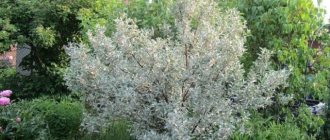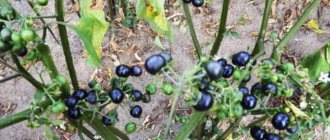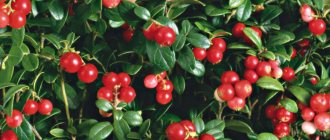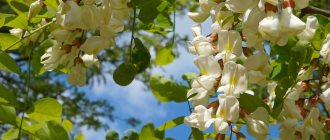Coriander, also known as cilantro or Chinese parsley. An annual herb in the family of aromatic flowering plants named after the genus Apium and commonly known as the celery and parsley family. It is the sixteenth largest family of flowering plants, with more than 3,700 species in 434 genera.
The family includes such well-known and economically important plants as: caraway, carrots, celery, coriander, caraway, dill, parsley, and others. The plant is completely edible - the tops and roots are used for food. However, leaves from the garden and harvested dried seeds are more often used in the preparation of culinary delights.
Most people perceive the taste of coriander leaves as a tart, lemon-lime flavor. However, about 4-14% of people surveyed perceive the leaves to taste like bath soap. This is likely due to the coriander gene, which contains chemicals from an organic compound called aldehyde present in soap.
Today we will talk about such a well-known spice as coriander. The article will discuss in more detail all its healing and other beneficial properties. And also its not most pleasant qualities, that is, what harm it can cause to the human body. An answer will also be provided to the question that worries many novice cooks - what is the difference between coriander and cilantro. By taking the advice from this article, you will learn how to choose only high-quality seasoning for yourself.
What is coriander?
We can get to know coriander in as much detail as possible if we start from the very beginning. And at the same time, let’s figure it out – are coriander and cilantro the same thing or not?
So, this is a herb that belongs to the Apiaceae family. As beekeepers assure, flowering coriander is an excellent honey plant. According to them, from one hectare of flowering coriander you can get up to 250 kilograms of honey.
The eastern region of the Mediterranean is considered to be the real homeland of this spice. And the Romans had already brought it to the western and then central parts of Europe. From where the spice spread further around the world. Coriander has long been grown (since about the fifteenth century) as a commercial crop in Australia, America, and Zealand. If we take Russia, then it is more often found in the central-western territory.
What type of coriander is it?
An ignorant person can easily confuse coriander with parsley. It’s worth finding out in detail what this spice looks like so that similar mistakes don’t happen in the future.
The root system of this plant is spindle-shaped. The length of the root can reach forty centimeters. And straight, bare shoots branch closer to the top of the stem. If we talk about their height, it can reach seventy centimeters.
The upper leaves are quite wide and are located on elongated petioles. The edges of the leaf blade are incised-serrate. And the lower leaves of the stem are twice pinnately divided and grow on short petioles. The shape of coriander leaves is similar to parsley leaves. That is why they are often confused with each other by ignorant people.
Coriander blooms with the arrival of summer and maintains its color for the first two months. Umbrella inflorescences also consist of small white or pinkish flowers. The fruits of this spice are hard, round, ribbed seeds. These seeds ripen from mid-summer to early autumn. And the time of ripening, as well as flowering, mostly depends on the region where the spice grows.
Growing in the garden
The timing of sowing spice seeds depends on the region. Coriander is not frost-resistant and at the same time does not tolerate extreme heat. In temperate regions, the best time for planting is from March to May.
In tropical climates, cilantro grows best during cooler, drier periods of the year, such as fall. When it gets too hot, the plant flowers and produces seeds.
Landing
Choose an area in the garden that gets plenty of sun. In southern regions where the ground heats up too much, it is best to plant the seeds in partial shade. The soil should be light, drain well, and have an acidity of 6.2 to 6.8.
If desired, mulch the top layer with compost, decayed leaves or manure using a shovel, rototiller or pick before planting. The layer thickness should be 5-8 cm. After mulching, level the ground with a rake.
Planting depth - 0.6 cm, interval between holes - 15-20 cm. Distance between rows - 30 cm. Seeds need a lot of moisture, so water them often. They will germinate in about 2-3 weeks.
Since coriander grows quickly, plant a new batch of seeds every 2-3 weeks to provide yourself with greens for the entire season.
Care
When the height of the sprouts has reached 5 cm, feed them with water-soluble nitrogen fertilizer. Try not to overdo it: only 1/4 cup is needed per 8 meters of soil where coriander is growing. Less water is now needed. The soil should be moist, but not wet, as the plant prefers a dry climate.
There is no need to feed coriander during the growth period: the plant only needs the fertilizers that you added to the soil when preparing the area for planting
Once sprouts emerge, add some mulch at the base to prevent weeds. Don't let the cilantro grow overgrown. Start thinning the crops when its height is 5-8 cm. Pull out small bushes, allowing the strongest ones to grow. Leave a distance of 20 to 25 cm between individual plants.
Harvesting
Trim individual leaves and stems at the base, close to the ground, when the bushes have grown to a height of 10-15 cm.
Use fresh, new leaves for cooking rather than old fern-like leaves, which can taste bitter.
Do not cut off more than a third of the leaves at once, as the plant will weaken. After harvesting, it will grow for at least another 2-3 cycles.
What is the difference between coriander and cilantro
This question worries, in fact, quite a large number of people. From young summer residents to novice cooks. What is the difference between coriander and cilantro?
Perhaps it’s worth starting with the fact that coriander and cilantro are, in fact, one plant. Yes, the real truth is that cilantro is the green part of the plant (stems and leaves), and coriander is nothing more than the fruit. That's the whole difference.
The green part – cilantro – is used exclusively fresh. While coriander seeds are used only dried. They can be used in cooking either whole or ground.
The dried seeds of the cilantro plant are called coriander. The name is used solely to designate the spice and has nothing to do with the plant. Crushed seeds acquire a lemony-citrus aroma due to the terpenes and pinenes they contain. The seasoning is described as warm, nutty and spicy. Known as orange flavor.
Possible diseases and pests, ways to get rid of them
The peculiarity of caring for a spicy plant is the need to maintain its cleanliness from chemical contaminants and environmental friendliness. Insecticides, fungicides, and other toxic preparations are not recommended for spraying. Maximum attention during care should be paid to preventing infections.
Typical diseases, pests of cilantro and ways to combat them:
| Infection | Signs and features | Methods of treatment and prevention |
| Ramulariasis | A fungal infection that develops at high humidity in cold summers. The surface of the leaves becomes covered with brown spots and then with a gray coating. | If there is a risk of infection, cilantro seeds are treated with Fitosporin (or other biofungicide) before sowing. If diseased plants are detected, they are also sprayed with biological preparations. |
| Powdery mildew | A fungal disease that occurs in dry, hot weather, with sudden changes in weather, as well as from excess nitrogen fertilizing. A sign of primary damage is a whitish, weeping coating on the stems and leaves. Later the areas become brown. | All infected bushes are removed from the garden bed. To stop the spread of the disease, the foliage is sprayed with soda ash solution, fermented herbal infusion or yogurt. |
| Rust | A fungal infection accompanied by the appearance of brown seals on the leaves. Over time, the pustules open and spray pathogenic spores around. | Prevention methods are similar to those for other fungal infections. There is no specific treatment for cilantro; chemicals are not used. |
| seed eater | The pest settles at the base of the bush, makes its way into the ripening seeds, gnawing holes in them. The seed beetle lays eggs in the soil around the plant, which quickly increases the area of infection. | Prevention of such infection consists of treating the seeds before planting (with a strong solution of potassium permanganate). The area for cilantro is carefully dug up for the winter, and all plant debris is removed. |
| Caterpillars, cutworms, bugs | Insects are found on leaves. Pests can cause serious damage to crops. | Caterpillars and bedbugs are collected by hand. Insecticides are not used for spicy plants. To save mass plantings, spraying with ash or mustard infusion is used. |
Cilantro, the varieties and species of which have varying degrees of resistance to garden infections, requires proper crop rotation. If any of the diseases are detected, the site is not used for cilantro or other greens in the next season. All plant residues must be removed and the soil dug up deeply for the winter.
Main features of the plant
As already mentioned, the green part is called cilantro and the seeds are called coriander. But it is interesting that this plant also has many other names. Each nation has its own name. Among them:
- Chinese parsley;
- Kalyandra;
- Hamem;
- Kishnishi.
In Arabic, coriander is called kuzbara, in Korean - sancho, and in India - dhaniya. As you can see, this aromatic spice really has many “names”. And in each country it is called differently.
We should also talk about the taste and aroma of this truly multifaceted plant. Its unripe fruits do not smell the best, but the already ripe ones smell truly unique. The aroma of coriander has pleasant sweetish notes. Its taste, on the contrary, gives off a spicy bitterness. All this is due to the presence of essential oils, which this plant is rich in.
Watering
As was said earlier, cilantro does not like too much moisture. But after sowing, you need to water abundantly so that the germinating seeds do not need moisture.
After the first shoots appear, watering is reduced so that the plant does not bloom too early; watering is increased a little. Also, abundant watering contributes to the juiciness of the plant.
After artificial or natural watering, it is necessary to loosen the beds.
Chemical constituents of coriander
Raw green coriander leaves are 92% water, 4% carbohydrates, 2% protein and less than 1% fat. In a control amount of 100 g of leaves, a predominance of vitamins A, C and K was revealed. The content of dietary minerals is assessed as moderate.
The nutritional value of coriander seeds differs from that of fresh stems or leaves. Despite the fact that their vitamin content is lower, seasoning in the diet allows you to provide a person with some amount of dietary fiber. In addition, the spice contains calcium, selenium, iron, magnesium and manganese.
This aromatic seasoning contains:
- Vitamins: B, C, E;
- Acids: fatty, organic;
- Other elements: alkaloids, proteins, tannins, starch, sugar, pectin.
Healing qualities of the plant
Well, we figured out what coriander is. It's time to go further and figure out why it is useful. Various coriander-based products can increase appetite, improve metabolism, and remove excess bile from the body. Therefore, this spice is used most often to help in the treatment of diseases of the liver, bile and gastrointestinal tract.
Coriander is very effective in dealing with coughs, because it is an excellent expectorant. Therefore, it would not be superfluous to use it for colds. But if we talk about the more serious properties of this spice, it can stop the development of cancer cells.
The seasoning inhibits the growth of malignant tumors. Therefore, the spice is actively used in folk medicine to prevent cancer. Additionally, it can accelerate wound healing.
Basic restrictions on consumption
And although coriander is a very useful plant, it has conditions under which it is better to refrain from consuming the spice:
- Allergic reaction;
- High pressure;
- Diabetes;
- Kidney failure;
- Thrombophlebitis.
If it is abused, especially in women, it can lead to disruption of the menstrual cycle and insomnia. Try not to exceed the norm of four grams of coriander and thirty-five grams of cilantro.
Some people are allergic to coriander leaves or seeds. Symptoms similar to those of food allergies. A study of 32% of tests shows that the allergic reaction characteristic of coriander also applies to other members of the family, including cumin, fennel and celery.
Allergic symptoms can be life-threatening. People suffering from this scourge should exercise extreme caution when consuming such spices.
Harmful properties
However, when using such means, you should not forget about standard precautions so as not to harm your body. An overdose of the drug can lead to unpleasant negative consequences, such as sleep disturbances.
Where and how is coriander often used?
Basically, of course, this plant is used in the culinary field. Moreover, they eat not only the seeds, but also the greens of this plant. And it cannot be said that it is intended exclusively for one type of dish. It can be used for meat, salads, and even for preserving vegetables.
Interestingly, ground coriander is used in some recipes for baking bread products. In our native country, as well as in European countries, coriander seeds are an ingredient in recipes for baking rye bread (Borodinsky varieties), usually either as a replacement or as an addition to traditional caraway seeds.
Coriander is mainly used as a seasoning.
To add aromatic notes, ground seasoning is added to the first and second courses. Famous German sausages are rarely produced without coriander seeds. The seeds are also used in the production process of brewing special types of Belgian beer.
But the merits of the spice do not end there. Coriander has also found its place in perfumery. For example, the essential oil of this plant is widely used in cosmetology or soap making. It pairs great with scents such as bergamot, cinnamon or citrus.
In folk medicine, too, it could not be done without it. Tinctures and decoctions with it are very useful, mainly for the digestive system. Here, for example, are a few recipes that may well be useful to you.
In one preliminary study, coriander essential oil was shown to inhibit gram-positive and gram-negative bacteria. Coriander roots have a greater depth of pronounced flavor than leaves. Asian cuisine makes extensive use of roots; traditional Thai dishes - soups or curries - are rarely complete without spicy seasoning.
Tincture for the stomach
It will help tidy up your metabolism and control the production of bile.
Components:
- Coriander – 1 teaspoon;
- Hot water – 1 glass.
Pour hot water over the coriander and close the lid. The tincture must be kept for a couple of hours. You need to drink about a quarter glass three times a day.
And together with cumin, the spice can help eliminate gases and reduce the acute phase of hemorrhoids.
Calming infusion
Coriander is often used as a sedative. And this is not surprising - it perfectly relieves anxiety and is a very effective antidepressant. Frequent nervousness will no longer be a serious problem for you.
Components:
- Coriander – 1 tablespoon;
- Vodka – 0.5 cups.
Pour vodka over the spice and cover with a lid. The tincture must be kept for a couple of weeks in a cool and fairly dark place. The finished infusion must be filtered. It is advisable to drink twenty drops three times a day.
Recipes for making medicines from cilantro
The name of the cilantro variety does not matter if the plant is used to prepare a preparation for healing purulent wounds and ordinary cuts. To prepare the product, you will need dried cilantro, but the best raw material for scarring lesions on the skin can be ground coriander.
To get rid of flatulence, you need to prepare 2 parts of coriander seeds, 1 part each of anise seeds and fennel. The products mix well, then take 2 tsp. mixture and add 100 ml of boiling water. You can infuse the product for 10-15 minutes, then filter the liquid. The finished infusion is taken once in a warm state.
In order to get rid of cystitis, you need to prepare an infusion of cilantro seeds. 800 ml of water is poured into a convenient container and brought to a boil. Then pour 4 tbsp into boiling water. l. coriander fruit. It is necessary to boil the mixture until 400 ml of liquid is obtained; it is better to cook the seeds over low heat. The resulting medicinal composition should be consumed during the day, the course of treatment lasts from 7 to 10 days.
For colds, healers suggest using a decoction made from spicy seeds and ginger root (otherwise called ginger). Coriander in the amount of 4 tbsp. l. mixed with several pieces of ginger, then the mixture is poured with water in the amount of 4 glasses, and simmered over fire until the liquid is reduced by half. We call the resulting drug healing and drink it in small doses until you feel better.
Coriander essential oil
Essential oil is obtained by steam distillation. This oil boasts of containing substances such as phellandrene or terpinene. They are useful in medical, perfumery and even industrial fields of human activity.
The essential oil itself has a yellowish color and a very pungent aroma. Bitter taste. But if you dilute it a little, then this “ugly duckling” turns into a real “swan”. In the sense that the aroma acquires floral notes, and the taste immediately becomes pleasant. It is noteworthy that its taste is also influenced by such an important detail as the place where the plant is grown.
What are the beneficial qualities of coriander oil?
- Has disinfectant properties and can stop bleeding;
- Warms when it hits the skin;
- Stimulates blood flow.
How to choose and where to buy coriander
Long gone are the days when merchant caravans delivered spices along the Silk Road and sold the seasoning for its weight in gold. Today, coriander is very easy to buy in almost any grocery store or even at the market.
If we talk about choosing cilantro, then be sure to take a closer look at the condition of the bunches. The leaves should be fresh green, without foreign spots. You need to store cilantro in the refrigerator for no longer than four days. You can freeze it if you need to preserve it for longer. But you need to dry the greens and chop them finely.
The quality of coriander is also easy to judge by how they look. Their color should be light or dark brown. And the surface is without any stains or signs of mold.
It is advisable to store dried cilantro or coriander in a tightly sealed glass container for no longer than six months.
By the way, coriander is easy to grow even on your own balcony if you don’t have your own plot of land. This way, you'll always have this delicious spice on hand, just like fresh cilantro.
How cilantro was grown in Russia
In the Crimea, Central Asia and the North Caucasus, wild coriander is also a memory of how troops and caravans of the Sarmatians, Greeks and Persians, Turks and other peoples who have long been engaged in the cultivation of cilantro passed through these lands. Information about cultural plantings of the plant in Russian gardens dates back to the second half of the 18th century, and they mention the name “kishnets”, which is close to the pronunciation “geshnes” in Farsi and Turkish “kişniş”, indicating the eastern route of the plant’s entry into Rus'.
Mass planting of this crop began only in the 19th century, when Count P.I. Apraksin brought seed material for spicy plants, including coriander, from Spain.
Cilantro, which was then called kolyandra, was so liked on the black soils of the Voronezh province that the plant began to displace the more popular anise.











